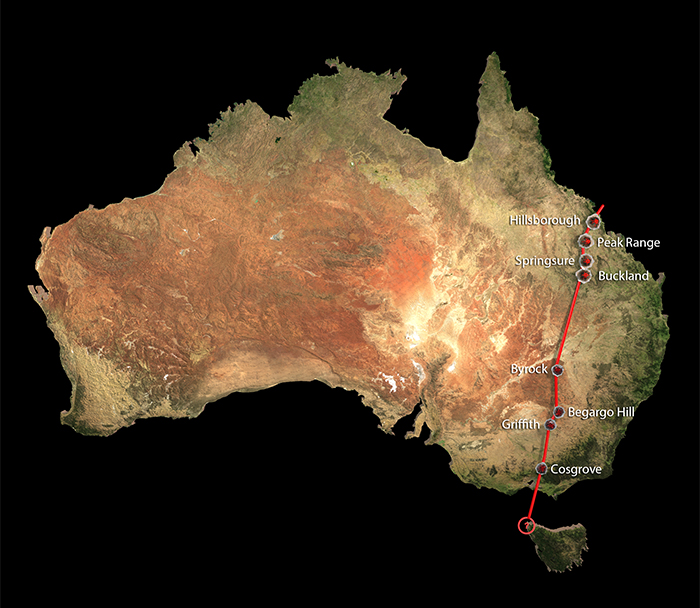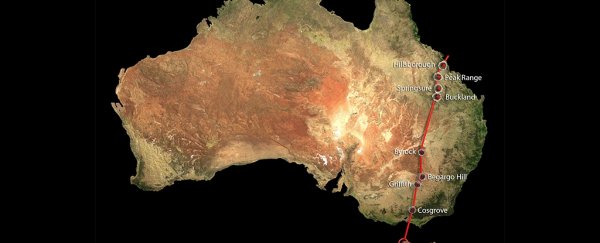Scientists have discovered the longest chain of continental volcanoes in the world, stretching almost 2,000 km along Australia's east coast.
The volcanic chain includes 15 ancient volcanoes that researchers already knew about, but they've now shown that they formed from the same hotspot in the Earth's mantle over the past 33 million years, as the Australian continent moved northwards.
This type of volcanic chain is known as a hotspot track, and they're pretty unusual as they don't form over a tectonic plate boundary, where most volcanoes are found. Instead they form over hotspots, caused by magma plumes almost 3,000 km below the Earth's surface. You can think of it like moving a piece of plastic over the top of a lighter, and watching as heat blisters form on the surface.
In the case of the newly discovered Cosgrove hotspot track, it's believed that the hotspot that formed the volcanoes is now located under the sea a little to the northwest of Tasmania, which means that there's no risk of them erupting anymore.
"We realised that the same hotspot had caused volcanoes in the Whitsundays and the central Victoria region, and also some rare features in New South Wales, roughly halfway between them," lead researcher Rhodri Davies from the Australian National University said in a press release. "The track is nearly three times the length of the famous Yellowstone hotspot track on the North American continent."
The full map of the track is below:
 Drew Whitehouse/NCI National Facility
Drew Whitehouse/NCI National Facility
The groups of volcanoes are around 700 km apart, so no one had ever expected them to be connected before. But the scientists figured out that they were all surface manifestations of the same hotspot by studying their composition - they all had the same chemical signature, with the volcanoes at the southern end of the track being younger than those at the north end.
So if the entire continent moved across this hotspot, why isn't the whole track raised with volcanoes? The researchers found that some areas of the Australian continent are too thick to let the heat of the mantle plumes rise close enough to Earth's surface for it to melt and form magma.
It's only places where Earth's solid outer layer, called the lithosphere, is thinner than 130 km that volcanoes formed, they found. That's important because it'll help scientists figure out how other continents' hotspot tracks formed, and provide insight into periods in Earth's ancient history that are poorly understood.
They also looked at the current movement of the Australian continent - which is one of the fastest on Earth, moving towards Indonesia at a rate of around 7 cm per year - to predict that the hotspot that formed the volcanic chain is now located between King Island and Tasmania, south of the Australian mainland.
"There is some seismicity in this region, there's been some earthquakes around that location recently which does hint that something is going on there, but we haven't been able to find any seamounts or volcanic regions at present," Davies told Stuart Gary over at the ABC.
The research has been published in Nature.
